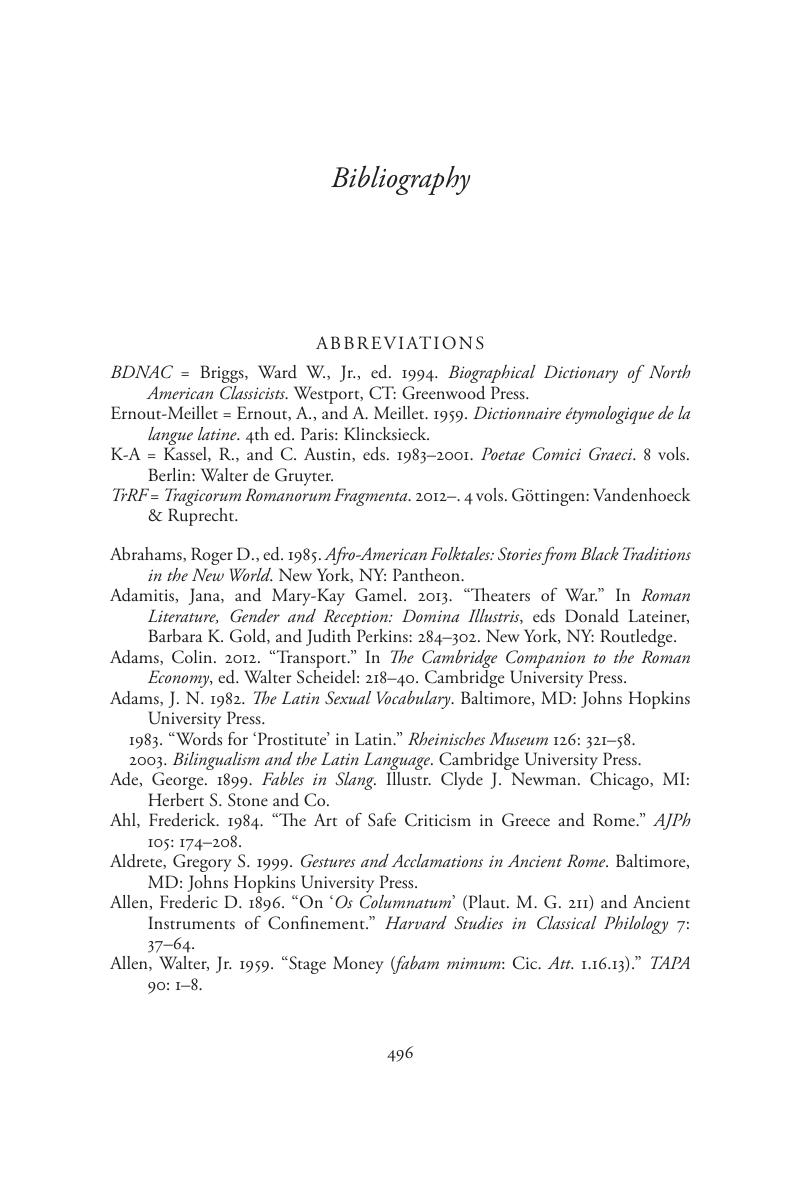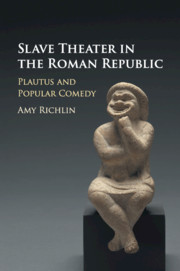Book contents
- Slave Theater in the Roman Republic
- Slave Theater in the Roman Republic
- Copyright page
- Dedication
- Contents
- Tables
- Preface
- Acknowledgments
- Note to Readers
- Chapter 1 History and Theory
- Part I What was Given
- Part II What Was Desired
- Conclusion
- Book part
- Bibliography
- General Index
- Index Locorum
- Index Verborum
- References
Bibliography
Published online by Cambridge University Press: 08 December 2017
- Slave Theater in the Roman Republic
- Slave Theater in the Roman Republic
- Copyright page
- Dedication
- Contents
- Tables
- Preface
- Acknowledgments
- Note to Readers
- Chapter 1 History and Theory
- Part I What was Given
- Part II What Was Desired
- Conclusion
- Book part
- Bibliography
- General Index
- Index Locorum
- Index Verborum
- References
Summary

- Type
- Chapter
- Information
- Slave Theater in the Roman RepublicPlautus and Popular Comedy, pp. 496 - 532Publisher: Cambridge University PressPrint publication year: 2017

